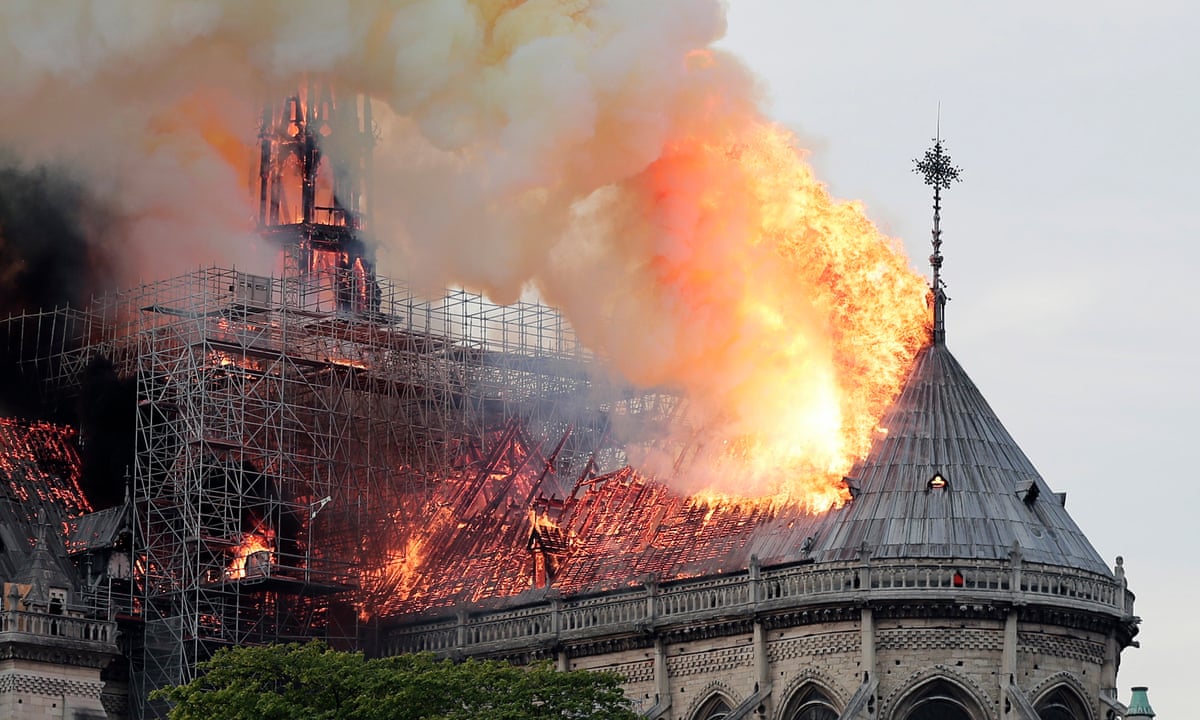
Did you know that the Notre-Dame de Paris fire on April 15, 2019, shocked the world and left a lasting impact on history? This tragic event not only damaged one of the most iconic cathedrals but also sparked a global conversation about heritage preservation. The fire caused the collapse of the cathedral's spire and much of its roof, but the main structure, including the two bell towers, survived. Efforts to restore Notre-Dame began almost immediately, with donations pouring in from around the globe. This article dives into 29 fascinating facts about the fire, its aftermath, and the ongoing restoration efforts. Whether you're a history buff or just curious, these facts will give you a deeper understanding of this monumental event.
The Notre-Dame de Paris Fire: A Tragic Event
The Notre-Dame de Paris fire was a devastating event that shocked the world. This iconic cathedral, a symbol of French heritage, suffered significant damage. Here are some key facts about the fire and its aftermath.
- The fire broke out on April 15, 2019, around 6:20 PM local time.
- It took firefighters over 12 hours to fully extinguish the blaze.
- The cathedral's iconic spire, added in the 19th century, collapsed during the fire.
- Approximately 500 firefighters were involved in battling the flames.
- The fire started in the attic beneath the cathedral's roof, known as "the forest" due to its wooden beams.
Historical Significance of Notre-Dame
Notre-Dame de Paris is not just any cathedral; it holds immense historical and cultural value. Let's delve into some fascinating facts about its history.
- Construction of Notre-Dame began in 1163 and was completed in 1345.
- The cathedral is considered one of the finest examples of French Gothic architecture.
- It has been the site of many significant events, including the coronation of Napoleon Bonaparte in 1804.
- Victor Hugo's novel "The Hunchback of Notre-Dame," published in 1831, brought renewed attention to the cathedral.
- The cathedral houses one of the world's largest organs, with nearly 8,000 pipes.
The Aftermath and Restoration Efforts
The fire left Notre-Dame in a precarious state, but efforts to restore it began almost immediately. Here are some facts about the restoration process.
- French President Emmanuel Macron vowed to rebuild the cathedral within five years.
- Over €1 billion was pledged for the restoration from donors worldwide.
- The restoration project aims to restore the cathedral to its original state, including the spire.
- Architects and historians are using 3D scans of the cathedral to guide the restoration.
- The restoration work is expected to be completed by 2024, in time for the Paris Olympics.
The Impact on Art and Relics
Notre-Dame housed many priceless artworks and religious relics. The fire's impact on these treasures was a major concern. Here are some key points.
- The Crown of Thorns, believed to be worn by Jesus Christ, was saved from the fire.
- The cathedral's three rose windows, dating back to the 13th century, survived the blaze.
- Several statues and artworks were removed for restoration just days before the fire.
- The Great Organ, one of the largest in the world, was not significantly damaged.
- Many of the cathedral's bells, including the famous Emmanuel bell, were unharmed.
Public Reaction and Global Support
The fire at Notre-Dame elicited a strong emotional response from people around the world. Here are some facts about the public reaction and support.
- Millions of people watched live broadcasts of the fire and its aftermath.
- French citizens held vigils and sang hymns as they watched the cathedral burn.
- Donations for the restoration poured in from individuals, corporations, and governments.
- The fire prompted discussions about the importance of preserving cultural heritage.
- Artists and musicians held benefit concerts to raise funds for the restoration.
Lessons Learned and Future Precautions
The Notre-Dame fire highlighted the need for better fire prevention and safety measures in historic buildings. Here are some lessons learned and future precautions.
- The fire prompted a review of fire safety protocols in historic buildings worldwide.
- Advanced fire detection systems are being installed in Notre-Dame during the restoration.
- The use of drones and robots in firefighting was explored during the Notre-Dame fire.
- The fire underscored the importance of regular maintenance and inspections for historic structures.
The Lasting Impact of the Notre-Dame Fire
The Notre-Dame fire left a mark on history. It wasn't just a building that burned; it was a symbol of culture, art, and faith. The world watched in shock as flames engulfed the iconic structure, but the response was equally powerful. Donations poured in from around the globe, showing a collective desire to restore this masterpiece. The fire also sparked conversations about preservation and the importance of protecting our heritage. While the damage was extensive, the spirit of Notre-Dame remains unbroken. Restoration efforts are ongoing, aiming to bring back the cathedral's former glory. This tragic event reminded us of the fragility of our cultural treasures and the unity that can arise in their defense. Notre-Dame will rise again, standing as a testament to resilience and the enduring power of human connection.
Was this page helpful?
Our commitment to delivering trustworthy and engaging content is at the heart of what we do. Each fact on our site is contributed by real users like you, bringing a wealth of diverse insights and information. To ensure the highest standards of accuracy and reliability, our dedicated editors meticulously review each submission. This process guarantees that the facts we share are not only fascinating but also credible. Trust in our commitment to quality and authenticity as you explore and learn with us.
